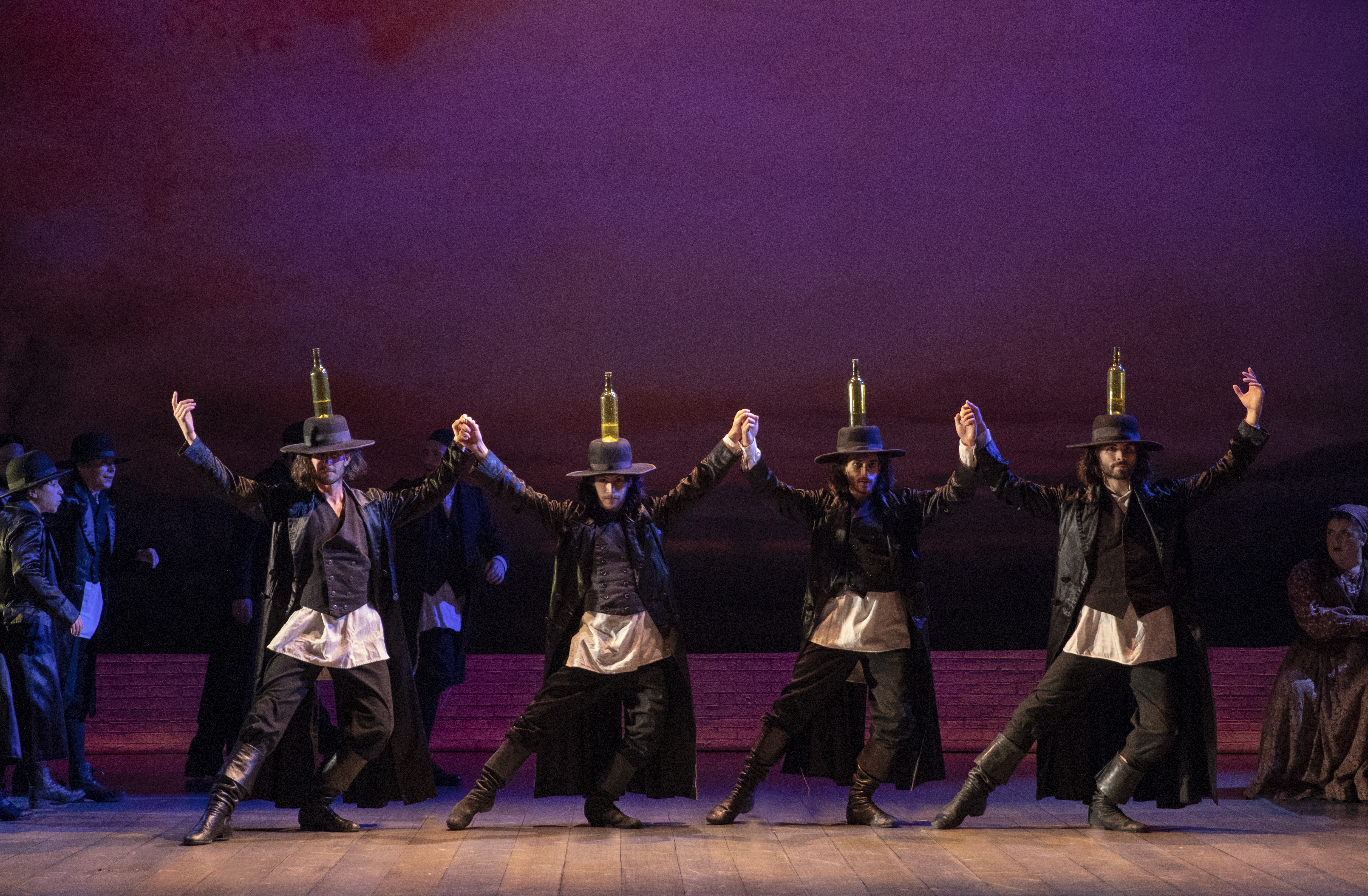Eight minutes. That’s the amount of time it takes to fall for the latest production of the beloved Broadway classic Fiddler on the Roof.
So why eight minutes? Well, that’s the length of the show’s first number, “Tradition,” which sets the tone — one full of high energy, epic choreography, and a lot of heart — for the nearly three-hour production from that first note.
“Tradition” also introduces audiences to the entire town of Anatevka, Russia, where the show is set in 1905. There’s the papas, the mamas, the sons, the daughters, and the rest of the village. There’s also the constable (Jeff Brooks), and other non-Jewish members of the village, who Tevye (Danny Arnold) tells us they rarely interact with.
While Anatevka tries to stick with its traditional ways — even though the world outside is rapidly changing — this national tour is more than willing to change some elements of the 1964 musical, which has had five Broadway revivals since it began, with 2015 being the most recent.
Tony Award-winning director Bartlett Sher — along with the team behind other revivals like South Pacific and The King and I — and Israeli choreographer Hofesh Shechter, aren’t afraid to make this production different than other renditions.
Take the stage itself. Set designer Michael Yeargan has created a very stripped down set, one with no fuss, nothing too fancy, just a few key pieces to interchange and help determine where we are in the story. His set is as simple as the people living in the town. When combined with Donald Holder’s lighting design, the set doesn’t really need much else. We are in Russia after all, not really a country known for being full of sunshine and rainbows.
Then there’s Sher’s direction. He really plays up the musical’s more comedic beats. And when you get the briefest synopsis of the show — which follows Jewish milkman Tevye and his wife Golde (Maite Uzal) as three of their five daughters marry (each moving further from the village’s traditional ways) while also dealing with a growing anti-Jewish sentiment — comedy probably isn’t the first word that comes to mind.
But Sher makes sure it's there, and there often. Take for instance Arnold’s portrayal of Tevye. Arnold gets to really play up the comedy, from his rendition of “If I Were a Rich Man” to the slight fear of telling his wife about certain things he’s done, Arnold will leave you in chuckles. Even him just saying “tradition” grows funnier as the show continues. As fun as the comedy is to watch, it’s during Tevye’s moments of struggle and anguish that Arnold really shines. Tevye is a man who knows the world is changing but isn’t ready to fully let go quite yet. That internal debate of which traditional values to keep and which to consider dismissing plays across Arnold’s entire body from head to toe, leading to some of the musical’s most raw moments.
And I can’t not mention Shechter’s choreography, based on the original staging by Jerome Robbins, the show’s original director and choreographer. Robbins’ influence is definitely felt throughout the show, but Shechter took that and amped it up to an 11, making it feel more modern and updated.
I could sit here and list all of the group numbers to watch out for, but if we’re talking absolute must-sees, “Tradition,” as mentioned, is a knock-out. Then there’s the dancing in “To Life” and “The Wedding,” the latter of which has an entire sequence where actors dance with bottles on their heads. The woman next to me gasped in excitement when that began, and it sounds far less impressive than it actually is. Have you ever tried doing an entire dance sequence without dropping a bottle off your head? I also have to mention Act I’s “Tevye’s Dream.” This number is easily the most different of the bunch — Catherine Zuber’s costumes add another level to it — but it never makes you feel like you’re watching a different musical.
As fresh as the new production feels, at its heart is still Jerry Bock’s music, Sheldon Harnick’s lyrics, and Joseph Stein’s book, which seem to be standing the test of time.
The trio created one of the longest-standing Broadway productions, with songs you’ll have stuck in your head for weeks to come. What this production sometimes lacks in its solos — they are fine but few will leave you talking about them next week, with Uzal being the exception — it more than makes up for in its duets and group numbers, thanks in large part to Shechter’s choreography and those harmonies. Oh, those harmonies. Thankfully, Act II is full of them, like in “Now I Have Everything,” sung by Ruthy Froch and Ryne Nardecchia, and Arnold and Uzal’s version of “Do You Love Me?” Both couples also have amazing chemistry.
There’s one other key element to making a production like Fiddler of the Roof successful, the Fiddler, played by Paul Morland. He doesn’t say anything, but he does play the fiddle with gusto, and can be easily spotted in his fabulous purple coat.
Even though the world of tradition Tevye knows slowly slips away, Fiddler on the Roof shows that not all traditions have to go, especially ones that leave you humming catchy songs all week.
Fiddler on the Roof
Wharton Center
Dec. 4-9
whartoncenter.com





